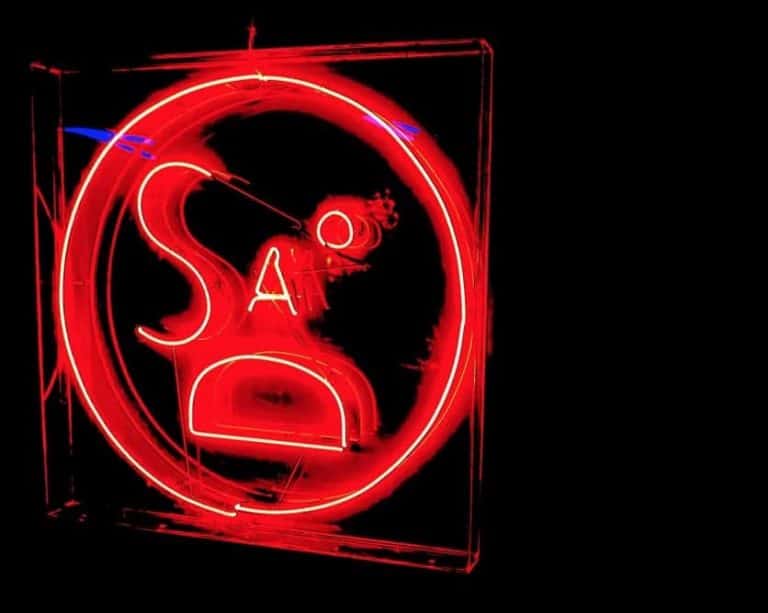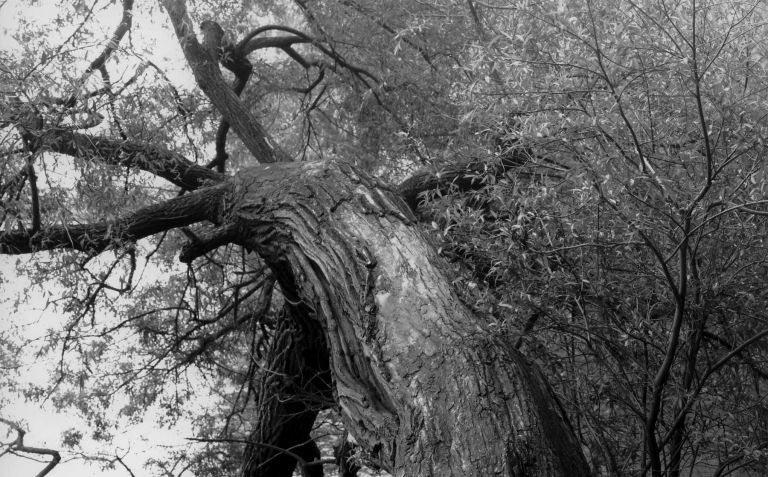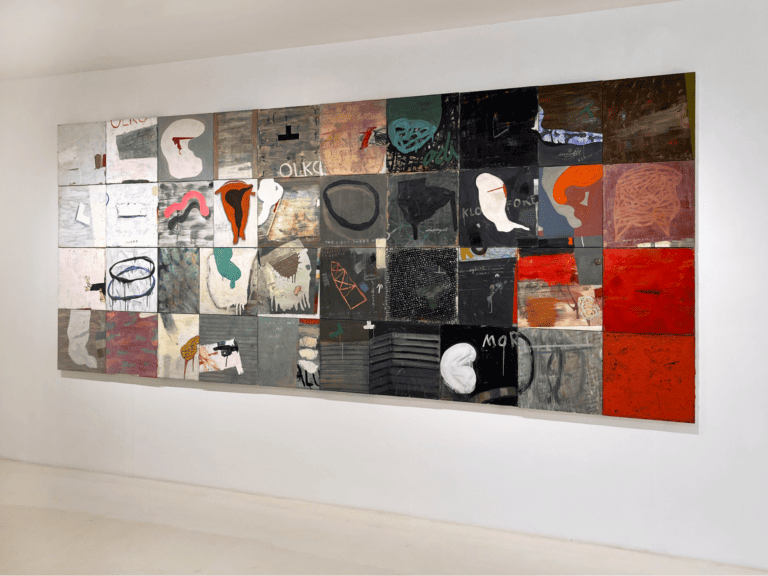The Long Museum, West Bund was one of the last stops on our trip to Shanghai, and the quote above responds to a comment made by the founder Liu Yiqian about how the museum is like his wife, who helped him to find this “second great love of his life.” The South China Morning Post has a great read on Liu here, the taxi driver –turned billionaire who’s made the news for various juicy things, including but not restricted to a multimillion dollar purchase of a Chinese antique cup using his Amex Centurion Card – a cup which he then proceeded to drink from.
At the time of our visit, the museum was undergoing some renovation works so we didn’t get a chance to experience it at full force. Nonetheless, what we did see was pretty spectacular. The building looks like a giant abandoned factory along the banks of the Huangpu River – it’s industrial, expansive, grey and huge. There’s a haunting coldness to the architecture that seeps through your bones and makes you think that you wouldn’t want to be locked up alone in the space overnight.

The main exhibition in the space was by Zheng Lu, famous for his dynamic sculptural work– he’s a favourite with Singapore’s Art Stage, and no doubt will be familiar to most of you out there.

The exhibition Re-sist-ance, knocked us for six with its sheer size and in-your-face expressiveness. Is this something stereotypically representative of the modern Chinese condition?
Perhaps.
But first, consider this behemoth of a structure.

The work consisted of about 10,000 aluminium plates arranged in the orderly shape of a tower. The structure was meant to allude to “lofty towers which have acquired religious and spiritual significance.” The carefully designed steel structure was meant to “prevent 10,000 steel balls from falling.” It was an icily intimidating tower of steel, sharply dissecting the gallery space.
Looking at it alone was pretty confounding, but only later did we realise that we were expected to ask a gallery assistant for help. (As an aside, the guy was cool as anything, po-faced and complete with a 1920s-esque steampunk flight jacket, and slickly gelled-back hair).
We were then given small ball bearings to chuck into the left hand side of the structure. If successful, the little balls would trickle down the frame, making tinny xylophonic sounds as they made their way through the metal grooves and frames .
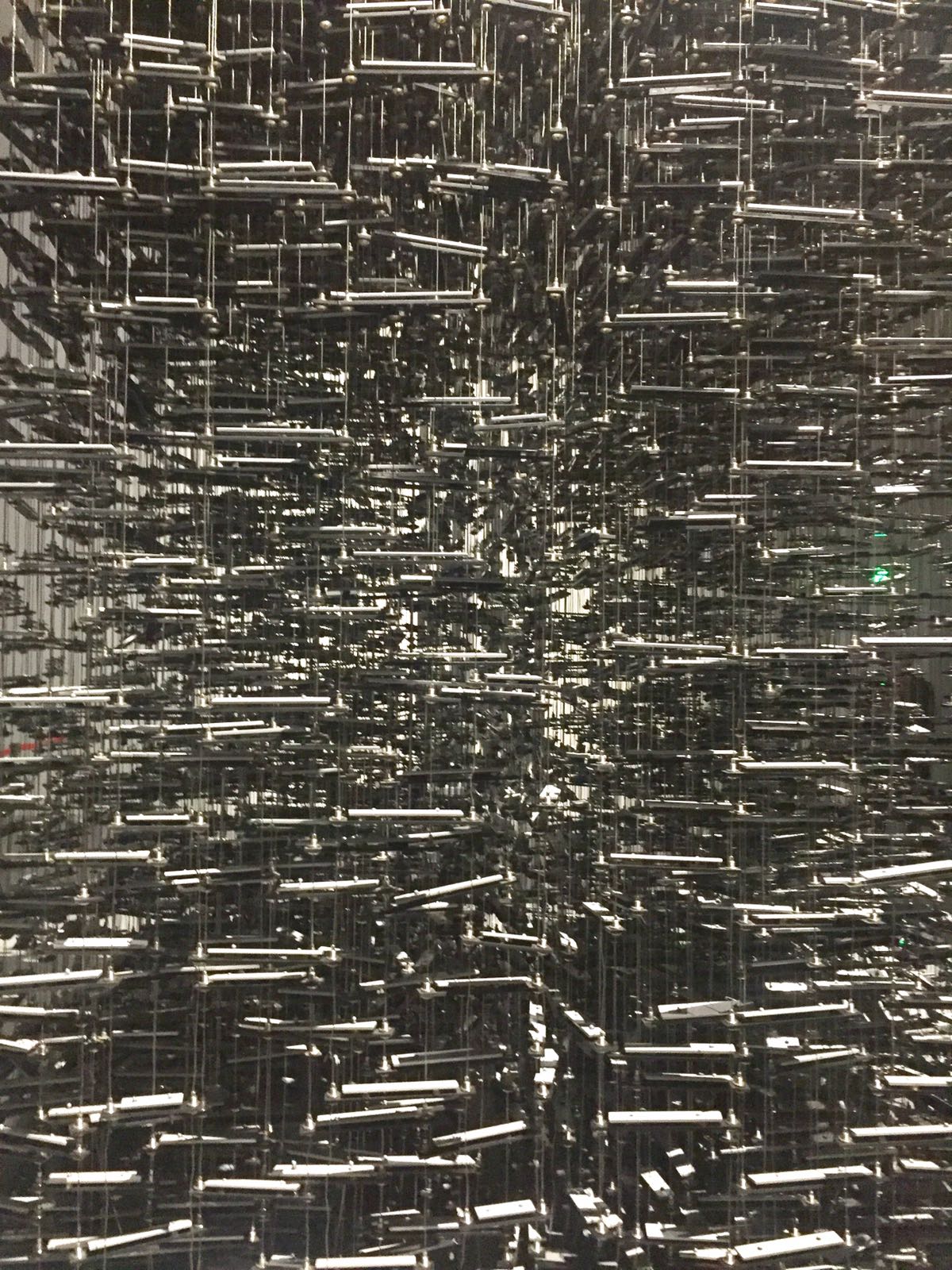
So many thoughts came to mind: “Why is my ball falling out of the structure?” “Is there supposed to be music?” “Is steampunk-pilot -man judging my lousy throwing technique?”
Basically, you needed to really hurl the ball at the structure with a huge amount of might, in order to produce a relatively high-pitched, oddly tuneful, series of sounds. It was a curious series of juxtapositions – the fierce effort required to sling the tiny ball, the sheer bulk of the massive structure and the resultant musical tones that emerged — all while being watched by an unsmiling Chinese Rocketeer.
It was strangely uncomfortable, oddly disturbing and yet truly fascinating. Suffice to say, there was nothing soft or welcoming about the work, but as you stared at it, the random tinkling of balls falling deftly through the plates was really quite poetic.
Perhaps this is the very nature of resistance against entrenched systems?
The act of projectiles striking steel created beautiful echoes, a physical and metaphorical resistance which filled the air with sweet discordant sound — sound that ultimately dissipated as the noise- making particles spiraled down the tower. The spitting-out of the particles by the harsh machinery was an inevitability. However, the echoes faded only until the next viewer arrived to engage with the piece, or indeed, was brave enough to defy conventional etiquette and engage with museum staff in obtaining the required balls. The process then repeated itself, prompting yet more questions – Is resistance always futile? Does it matter that the ball bearing is never going to break through the steel structure? Is the musical sound, effort and camaraderie of approaching the work as an engaged group of participants, an end in itself?
I also loved 3000 Meters of Woe, which was inspired by Pleasantville, a 1998 American film depicting a town that slowly changes from black and white to colour. The colour in the film was used as a metaphor for self –awareness and individuality, with people in the town being infused with colour as they started to embrace their diversity, and challenge hypocritical social orders imposed upon them by others.
The work is essentially a multi-coloured cloud of 3000m of stainless steel wires, that engulfs you as you enter the museum space. The artist observes that the production of the work made him “so spiritually free that everything material seemed to be as trivial as dust.”
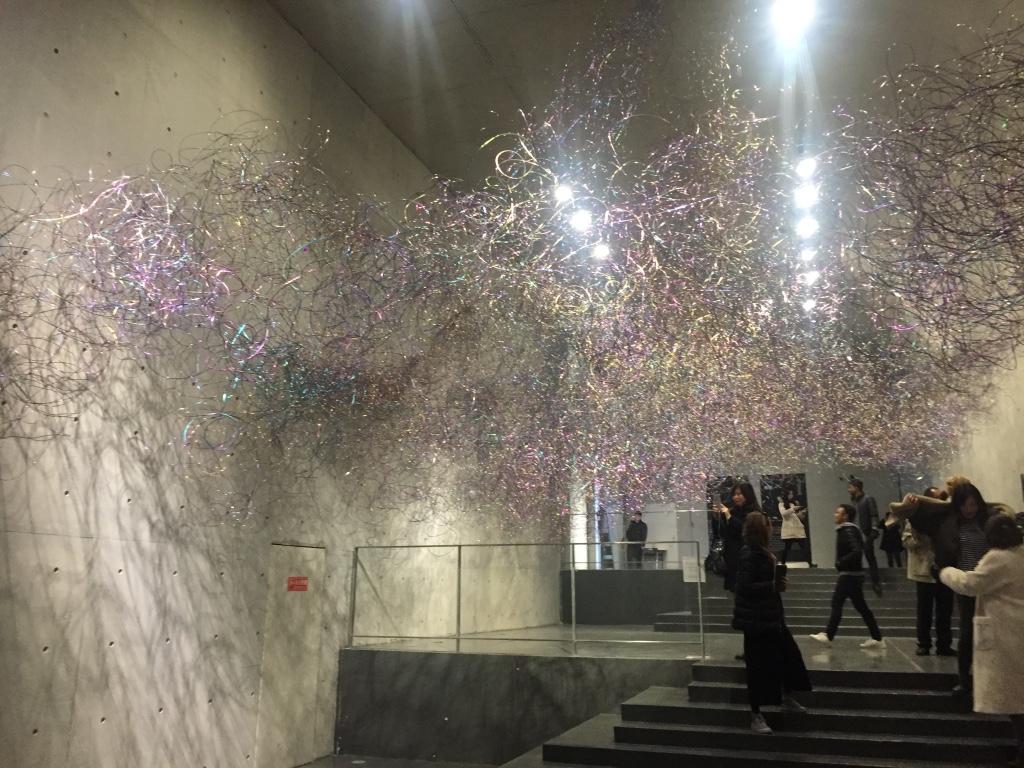
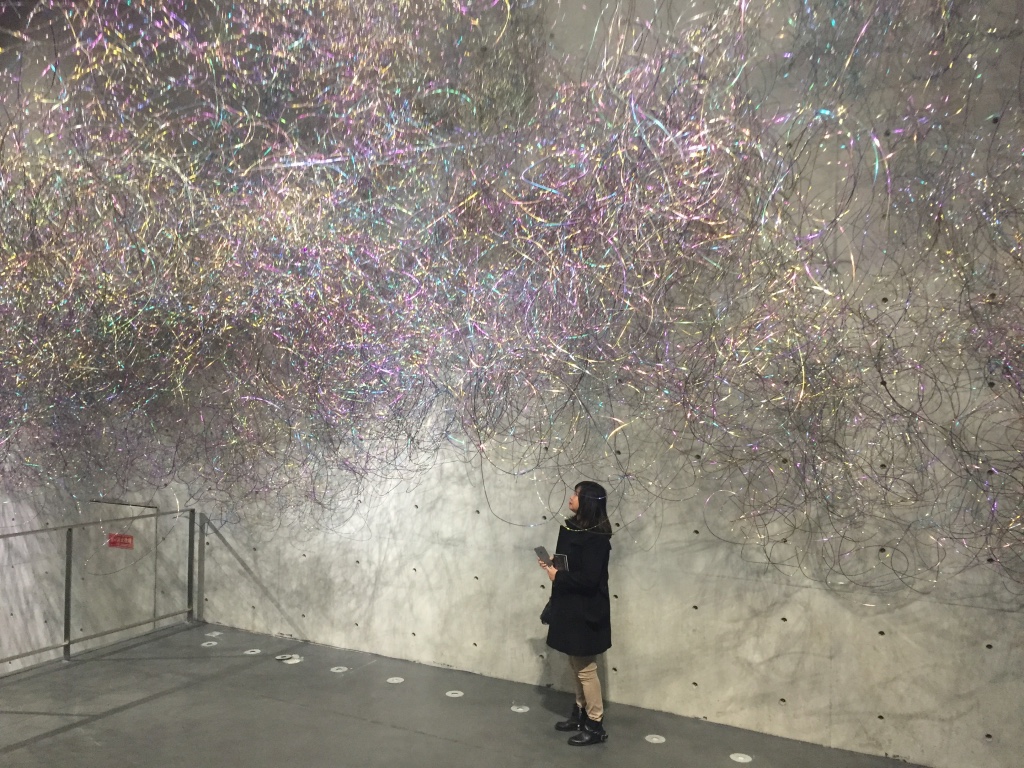
It’s visually arresting, and even without addressing the conceptual aspects, is really quite beautiful. The iridescent colour adds a real point of interest given its unexpectedness – we do not expect large amounts of wire in an industrial – looking space, to be colourful. Nor do we expect it to be pretty. That the installation is capable of being both, is quite something.
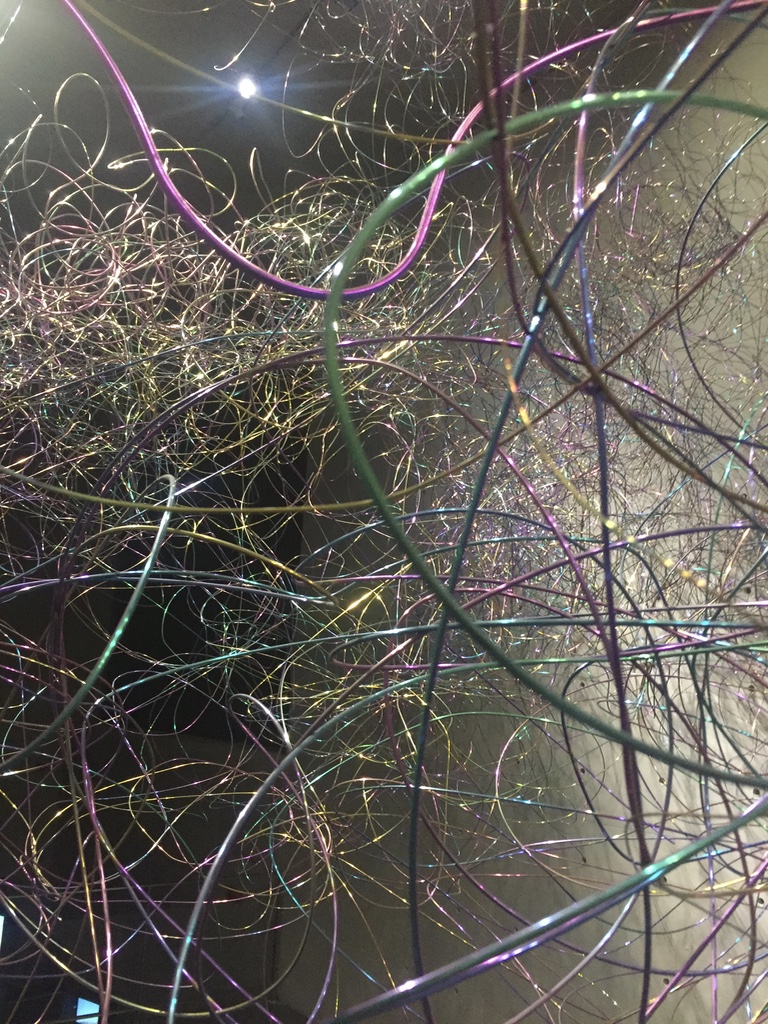
There’s an absorbing (if slightly condescending) read about Liu Yiqian in the New Yorker , which is worth a look. Liu may not have dared to find a new lover without his wife’s blessing, but he certainly dared to do many other audacious things, including stripping down to his underwear and posing like a seated Tibetan yogi statute that he had purchased for millions of dollars.
The New Yorker article addresses a number of ideas, but one key notion that seems to run through the piece is the boorishness of present-day Chinese art purchases – the sense that money can buy anything and that artworks are “disrespected” due to a lack of technical knowledge and ability to appreciate artistic value. Indeed, these are all fair points, but I do also think there’s something to be said about the democratization of the art world, where obnoxious billionaire acquisitions ultimately serve larger social goals of providing access to the general population.
Philosophically, one might go so far as to say that parallels may be drawn with Zheng Lu’s exhibition at the Long Museum. The works were massive, brutish and almost vulgarly in-your-face, but they can hardly be dismissed as shallow and one-dimensional, simply because of these qualities. Put another way, Liu may have physically drunk from Emperor Qianlong’s cup, but in so doing has also paved the way for the rest of us to take a metaphorical sip, when the work is eventually exhibited.
Now, is that really such a bad thing?
(Let us know what you think, we’d love to hear).







